Historic Places
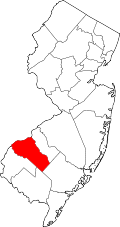
Gloucester County (Old), founded in 1686 and once including within its boundaries the present Atlantic and Camden Counties, is unique in that it is an outstanding Agricultural, Industrial and Residential Area. Farming in all of its phases is highly established and developed. The raising of fruit, farm vegetables, and poultry, the dairy industry, the breeding of cattle, hogs, and other livestock, the existence of modern year-round canneries, quick freezing establishments and nearby markets all go far to make Gloucester County one of the chief food producing sections of our State and of our Country.
The Gloucester County Historical Society
17 Hunter Street
Woodbury, NJ 08096
856-845-7881
James and Ann Whitall House
Hessian Road
National Park, NJ 08063
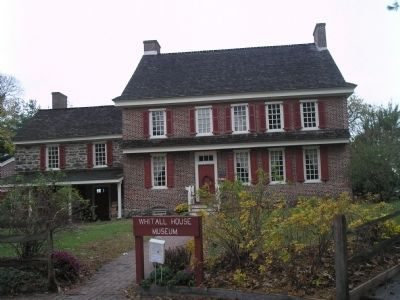
(Photo by Bill Coughlin, courtesy of HMdb.org)
James Whitall, a wealthy Quaker farmer and merchant, and
his wife Ann Cooper built the main brick section in 1748.
On April 16, 1777, the Pennsylvania militia commandeered the farm
and built Fort Mercer in the northern apple orchard. Son Job Whitall
noted in his diary on October 10, 1777 that the Americans “turned us
out of our kitchens ye largest room upstairs and ye shop and took
our hay to feed the horses.” That day Colonel Christopher Greene had
arrived to command the fort and used a portion of the house as military headquarters.
The battle was a key victory and morale builder; however, news
of a second siege caused the Americans to destroy the fort
and leave the property on November 24, 1777.
Home of Captain James Lawrence
North Broad Street
Woodbury, NJ 08096

(Photo by Bill Coughlin, courtesy of HMdb.org)
Capt. Lawrence was a naval hero in the War of 1812.
His greatest victory was the capture and sinking of the
H.M.S. Peacock while in command of the sloop of war
U.S.S. Hornet. He died in action on June 1, 1813 during an
engagement between the frigates U.S.S. Chesapeake and
H.M.S. Shannon, his last words being “Don’t give up the ship.”
Gen. Cornwallis made his headquarters in this house.
Today it serves as headquarters of the Woodbury Historical Society.
Ladd's Castle
Lafayette Avenue and Colonial Avenue
Woodbury, NJ 08096

(Photo courtesy of Wikipedia.org)
John Ladd, a surveyor who helped William Penn plan
Philadelphia, built this house in 1688. The original name
was Candor Hall.
Adams Meeting House aka Old Stone Church
Oak Grove and Meeting House Road
Swedesboro, NJ
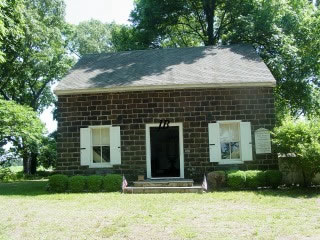
(Photo courtesy of Wikipedia.org)
The church was built in 1793 by local farmers who
needed a place to gather and worship the then
new Methodist religion that was spreading
throughout the land. Said to be the oldest Methodist
Church in South Jersey. It is also known in earlier
days as the "Adams Meeting House," and
"Oak Grove Church." This area of town was known
as the "Adams Neighborhood, as the church was
built on a corner of the farm of Joseph and
Elizabeth Adams. Later Mr. & Mrs. Adams gave
an acre of adjoining land for use as a burial ground.
This cemetery is remarkable because of the small
proportion of children's graves in it.
Barnsboro Hotel
Pittman and Sewell Road
Barnsboro, NJ

(Photo courtesy of Wikipedia.org)
The original section of this old hotel was built of cedar logs
twelve by sixteen inches squared, and was standing as early
as 1720, then owned by John Budd. John Barnes, from whom
Barnsboro takes its name, was issued the first license for an
inn March 19th, 1778.
Benjamin Clark House
Woodbury-Glassboro Road
Deptford, NJ

(Photo courtesy of Wikipedia.org)
This was the original Benjamin Clark farm. The west section
of this old brick home is the oldest, having been built in the
late 18th century. The east section has a stone insert,
dated "1804. Benjamin was a Revolutionary soldier. Because of
Benjamin Clark's patriotic activities during the Revolutionary War,
his home was raided several times by the British. While taking
a load of grain to Valley Forge for Washington, he had his four
horse team taken by the British. Late in the night Ben stole into
camp and released his horses and hid them on an island in
Mantua Creek. Ben left one old cow in the barn and told the
British they had taken everything else.
Carpenter Street School
Woodbury, NJ

(Photo courtesy of Wikipedia.org)
A rare antebellum survivor, the Old Carpenter Street School
may be New Jersey's oldest existing schoolhouse built for
African-Americans. It is also the oldest surviving structure
associated with the Bethel African Methodist Episcopal
Church in Woodbury, a congregation founded in 1817.
Built by Joseph Tatum in the vernacular Gothic Revival style
in 1840 (with modifications in 1870 and 1930), the small frame
building became a public school in 1881. Eight years later,
a larger schoolhouse was built a block away, and the
Old Carpenter Street school became a parish house.
Colonel Bodo Otto House
Kings Highway
Mickleton, NJ

Dr. Bodo Otto, of Luneburg, Province of Hanover, Prussia, came to America 1752. In 1772 his son Bodo Otto, Jr., purchased one hundred acres of land for four hundred ninety-seven pounds the property of William Scull who had purchased the same 1766 from Benjamin Lodge, at Mickleton. Here Dr. Bodo Otto, Jr., who served as a surgeon in Washington's Army at Valley Forge, lived. During 1777 when the Tory invasion took place this place was partially burned. The original property dates back to 1688.
Death of the Fox Inn
Old Kings Highway
Mount Royal, NJ

The inn was built in the early 1700's. This was in the early days a rendezvous of a famous sporting club with membership from Philadelphia and Gloucester County. It got its name because the hunters of the Gloucester Fox Hunting Club (1766 to 1818) often gathered at the inn after the chase. This was the first such hunt club in America. Here the Philadelphia members served a delightful repast and the Gloucester County members could promise good sport with horses, dogs and a fox. The chase even led the sportsmen as far as Salem. During the Revolution it was used for recruiting and as a military headquarters.
Franklinville Inn
2526 Delsea Drive
Franklinville, NJ 08322

This old hostelry was once a well-known stagecoach stop in Little Ease (now Franklinville). Just when this sturdy building was erected, no one seems to know, but it was before 1826, for on March 8, 1826 Phebe Cake petitioned to have the license continued.
It once had a large cook house adjoining the tavern with an immense cook stove. Shelves lined two walls with all things ready and necessary for a meal. Crocks stood full of preserves, mince-meat, jams and jellies. In the old smoke house hung hams, beef and meat galore. The old wagon sheds and water trough for horses disappeared along with the other out-buildings around the 1920's.
Jesse Chew House
Mantua-Sewell Road
Sewell, NJ

(Photo courtesy of Wikipedia.org)
Jesse Chew was a Methodist preacher and his home was
spared from the raids of the British. The house, built of
Jersey sandstone in 1772, is still in remarkable condition.
Hand-hewn rafters, the corner fireplace, iron door hinges
and the finger latches are original.
Downer Methodist Episcopal Church
2226 Fries Mills Road
Monroe Township, NJ

(Photo courtesy of Wikipedia.org)
A school was built here in 1871, then the church took it over
and added on to get the church, which burnt down and was
rebuilt. On the announcement board (visible) it calls itself
"The little church with the big welcome."
Free Library and Reading Room-Williamstown Memorial Library
405 South Main Street
Williamstown, NJ

(Photo courtesy of Wikipedia.org)
The library was built in 1878
G.G. Green's Block
108 S. Broad Street
Woodbury, NJ

(Photo courtesy of Wikipedia.org)
The historic building -- three stories high and occupying
most of a city block on South Broad Street -- was erected
some 120 years ago.
The Hall Street School
Hall Street
Monroe Township, NJ

(Photo courtesy of Wikipedia.org)
The school was built in 1887.
Moravian Church
Swedsboro-Sharptown Road
Woolwich Township, NJ

(Photo courtesy of Wikipedia.org)
Built in 1786
Mount Zion African Methodist Episcopal Church
172 Garwin Road
Woolwich, NJ

(Photo courtesy of Wikipedia.org)
It was built in 1799. According to a sign in front of the church
the cemetery is an Underground railroad site.
Mullica Hill Historic District
Mullica Hill, NJ

(Photo courtesy of Wikiepedia.org)
St. Stephen's Episcopal Church in Mullica Hill, NJ. The whole
"town" (CDP) is in the Mullica Hill Historic District which is
on the NRHP since April 25, 1991 The district covers roughly,
Main St. from Mullica Hill-Bridgeport Rd. to jct. of
Commissioner's Rd. and Bridgeton Pike, Harrison Township.
C.A. Nothnagle Log House
Swedesboro-Paulsboro Road
Gibbstown, NJ
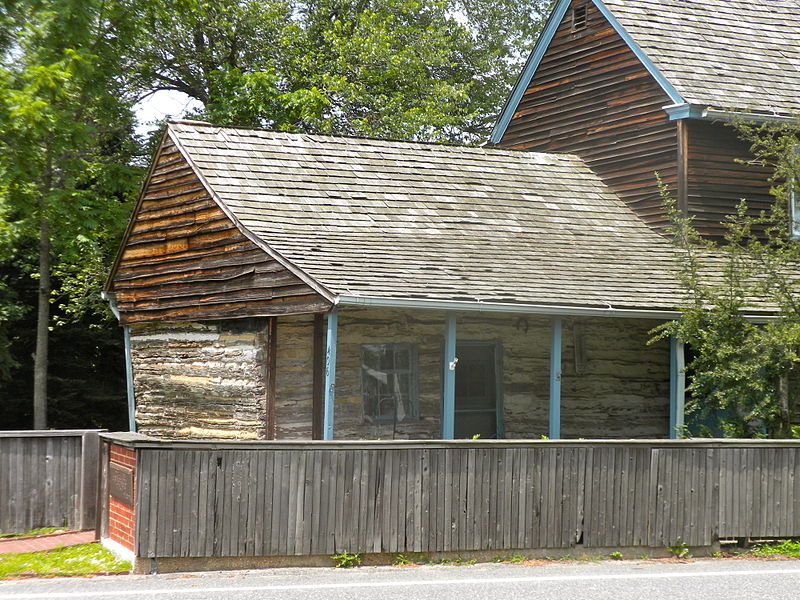
(Photo courtesy of Wikipedia.org)
One of the oldest surviving log houses in the United States.
The oldest part of the house was built around sometime
between 1638 and 1643 by Finnish or Swedish settlers in
the New Sweden colony, and Scandinavian ironware from
the 1590s is still extant around the fireplace. The fireplace,
probably built of bricks brought over to North America as
ship's ballast, is asymmetric and placed in a corner of the cabin.
Pitman Grove
Pitman, NJ

(Photo courtesy of Wikipedia.org)
The Pitman Grove area was developed from a summer camp
meeting at the turn of the century. In the center of the Grove
area is the Camp Meeting Auditorium which was built in 1882
and recently renovated by the Borough. This historic building
was once the center of Methodist worship. People came from
far away for revival meetings at the Auditorium; the first such
meeting was held in 1871.
There are 12 "avenues", number 1 through 12 representing
the disciples of Christ, that are joined to the auditorium as
spokes on the hub of a wheel. There is a spot in the tabernacle
where you can stand and look down all 12 avenues. Eventually
small cottages were built on these avenues and this was the
origin of the town. Today the "avenues" are actually narrow
sidewalks. In 1905, Pitman Grove became the Borough of Pitman.
Back then, Pitman was known as a place with no mosquitoes,
no malaria and no saloons. To this day, Pitman is a dry town
with no liquor stores and no liquor licenses issued.
Richardson Avenue School
Swedesboro, NJ
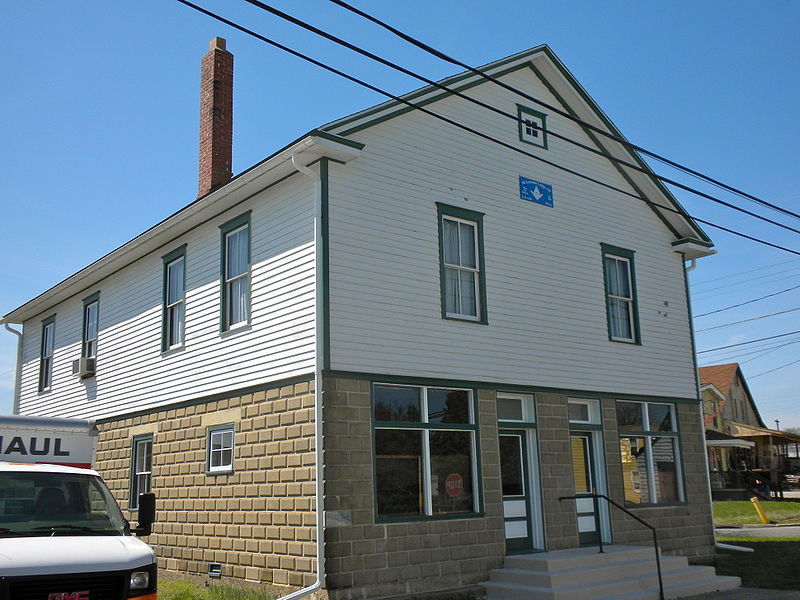
(Photo courtesy of Wikipedia.org)
The school was built in 1931.
Richwood Methodist Church
Elmer Road
Harrison Township, NJ

(Photo courtesy of Wikipedia.org)
On May 22, 1860, the Mount Pleasant Methodist
Episcopal Church was organized in a little
community once called White Horse (1825),
Campbell’s Cross Roads, Mount Pleasant (1840),
Five Points (1879), Richwood (1889) and “Hell Town.”
Preliminary meetings were held at Clems Run
School House, located a mile south of the White
Horse Tavern, which stood on the site of the
present recreation field. Following this, the present
Richwood Academy, a school house at the time,
was used as a church. In fair weather, church
meetings were held outside in the grove of tree.
During a meeting on June 19, 1860, a formal
resolution was passed to build a new church.
John C Rulon House
428 Kings Highway
Swedesboro, NJ
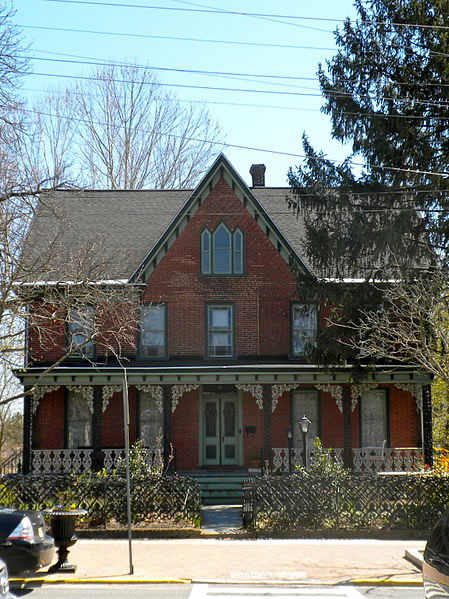
(Photo courtesy of Wikipedia.org)
The building was built in 1881.
St. Peter's Episcopal Church
Kings Highway
Clarksboro, NJ

(Photo courtesy of Wikipedia.org)
St. Peter’s Protestant Episcopal Church was founded
on November 9th, 1770 and was incorporated
April 28th, 1835. It’s a colonial parish being the last
Anglican Church founded in New Jersey before the
Revolutionary War, the last of twenty. The early history
is interesting and reflects the demographic realities of
this part of historic King’s Highway. Though founded as a
chapel of the Church of England, the early church in
Berkeley was home to Anglicans, Methodists and Quakers.
It was not until later that a conscious decision was
made by the then “managers” to become an Episcopal Parish.
St. Thomas Episcopal Church
Main and Focer Streets
Glassboro, NJ

(Photo courtesy of Wikipedia.org)
Built in 1846
Gov. Charles C Stratton House
Woolwich Township, NJ

(Photo courtesy of Wikipedia.org)
The house was built in 1791. It was the home of Gov. Charles C Stratton
the first NJ governor to be elected by popular vote.
Thompson House
Woodbury, NJ

(Photo courtesy of Wikipedia.org)
The house was built in 1892 and also known as Thompson's Grocery Store.
Trinity Church
Swedesboro, NJ
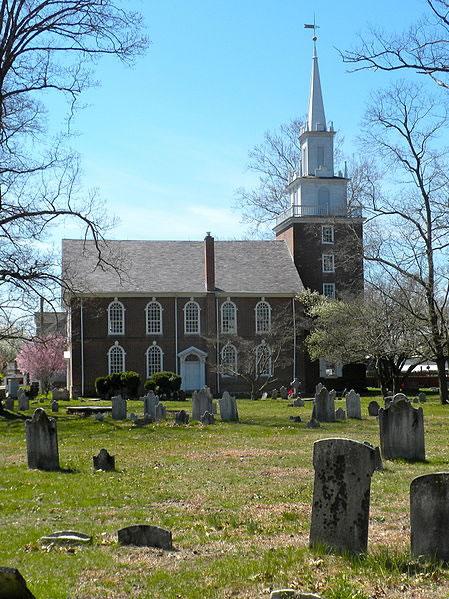
(Photo courtesy of Wikipedia.org)
Congregation founded about 1700 as a Swedish
Lutheran Church with services in Swedish, but
became Anglican then Episcopal Church built in 1786.
Friends Meeting House
Mickleton, NJ

(Photo courtesy of Wikipedia.org)
On December 13, 1756, permission was granted by Haddonfield
Monthly Meeting of the Religious Society of Friends to
"divers Friends who lived near Raccoon Creek" to hold
"an indulged meeting" for worship at Solomon Lippincott's home.
The meeting at that time was known as "Solomon's Meeting."
and was located on Wolfert Station Road. In 1759, Friends of
Upper Greenwich built a new meetinghouse near Solomon
Lippincott's home. It was a high one-story building of good cedar,
and was located near the current Solomon's Graveyard.
Finally on March 26, 1773, after 17 years of continuous requests,
approval of an "established monthly meeting" was granted to
Friends of Upper Greenwich by Haddonfield Monthly Meeting.
In 1785 the meetings of Upper Greenwich and Woodbury were
separated from Haddonfield to form the new Woodbury Monthly
Meeting. At the first Woodbury Monthly Meeting, January 11, 1785,
Solomon Lippincott was continued as an elder for Upper Greenwich.
Benjamin Hooten and David Brown were appointed overseers
for Upper Greenwich. About 1797 plans were considered for a
new meetinghouse.
The present Friends Meeting House was completed in 1799 on
a 2-acre plot, donated by both Samuel Mickle and Samuel Tonkin.
The bricks were burned on the farm of William Batten near Clarksboro.
The building originally had two stoops with hoods covering each
of the doors. It was divided in half with the men meeting in one side
and the women in the other. Horse sheds were built beside the
meetinghouse with lumber from the old meeting house.
Whitney Mansion
Whitney Avenue on the campus of Rowan University
Glassboro, NJ

(Photo courtesy of Wikipedia.org)
Built in 1849 and also known as Hollybush, the historic home
was used as the Rowan University President's Residence
until 1998. Since 2003, Rowan University has spent more
than $3 million to restore the mansion. It is now being used
as a meeting place and museum.
In 1967, the mansion hosted the Glassboro Summit
Conference, a summit meeting between United States
President Lyndon B. Johnson and Soviet Union Premier
Alexei Kosygin.
Woodbury Friends Meeting House
120 N Broad Street
Woodbury, NJ

(Photo courtesy of Wikipedia.org)
A historic Quaker meeting house built in 1715.